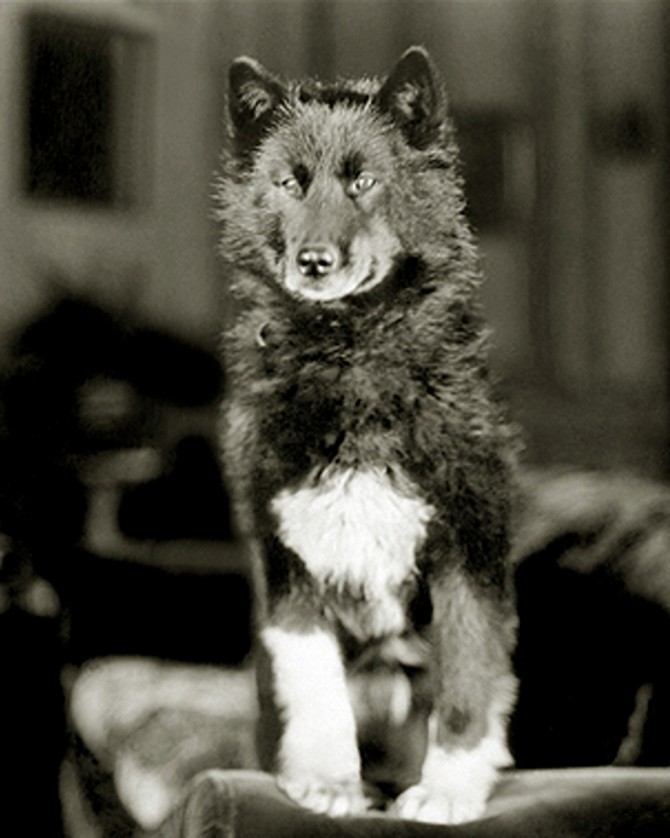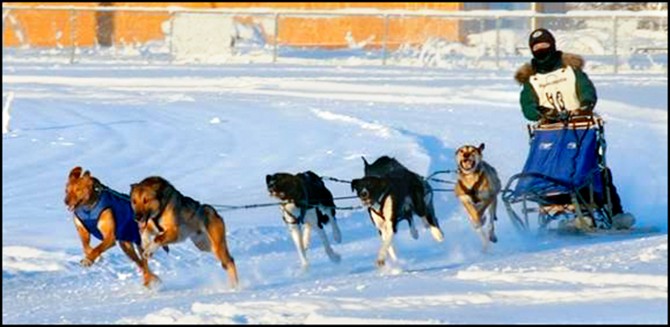Geneticists link DNA of famed sled dog Balto to modern breeds
By David Nutt, Cornell Chronicle
Balto, the dashing canine renowned for transporting diphtheria antitoxin to Nome, Alaska, in 1925, is the most famous sled dog in history – immortalized in books, films and a statue in Manhattan’s Central Park. Now, a Cornell-led project has added a new chapter to his story, by using ancient DNA extraction and analysis to reconstruct his phenotype and identify his genetic connections to Siberian husky and modern sled dog breeds.
The research reveals Balto’s lineage was genetically healthier and less inbred than modern breeds, with characteristics adapted to the extreme environment of 1920s Alaska.
The team’s paper, “Comparative Genomics of Balto, a Famous Historic Dog, Captures Lost Diversity of 1920s Sled Dogs,” published April 27 in Science.
The Cornell team was led by the paper’s co-lead author Heather Huson ’97, associate professor of animal science in the College of Agriculture and Life Sciences, who has a personal connection to dog sledding, having raced competitively for almost 25 years throughout North America. Now she studies how genetics shapes the traits – from physiology and speed to behavior and diet – that produce the ideal working canine, including detection and seeing-eye dogs.
When a veterinarian friend who works with Iditarod sled dogs told Huson that he could connect her with the Cleveland Museum of Natural History, where Balto’s taxidermized hide has been displayed since he died at the age of 14 in 1933, Huson leapt at the opportunity to access the famous dog’s DNA.
“The kid in me went, ‘I just want to do something with Balto.’ The scientist in me said, ‘What was really Balto’s influence on modern sled dogs?’” Huson said. “Granted, Balto himself wasn’t bred, but he came from some of the most influential lines in modern sled dogs.”
Whereas purebreds are reared under strict guidelines to cultivate specific physical criteria, such as size, coat and coloring, modern Alaskan sled dogs are mutts that are bred to improve their performance.
“I was enthralled growing up with sled dogs,” Huson said. “They’re amazing athletes, they’re fast, but they have a lot of endurance. Mentally, they have to be tough. What are the genes that make them an awesome sled dog? Why can they do these amazing things that your average dog can’t do?”
While Balto was clearly a sled dog, his owner, Leonhard Seppala, was one of the founding breeders of the Siberian husky, raising the potential for some interesting overlap.
Huson teamed up with a group of researchers, including Beth Shapiro at the University of California, Santa Cruz, and Elinor Karlsson at University of Massachusetts Chan Medical School, who were able to extract Balto’s ancient DNA – a difficult task, given how degraded and unstable the genetic material becomes over time – and they conducted the DNA sequencing and analysis. The team then compared the results of this “sample size of one” with data, provided by the Zoonomia Project, of 240 mammal species and 682 genomes from dogs and wolves of the 21st century.
The researchers found that Balto clusters most closely with Alaskan sled dogs, with a high genetic diversity and a lower burden of potentially damaging genetic variants. He also had substantial ancestral similarity to Siberian huskies, Alaskan malamutes, Greenland sled dogs and outbred dogs from Asia.
“Siberians were kind of being created at the same time as the modern Alaskan sled dogs. This shows Balto is at the crux of that. He is showing that early foundation that’s actually similar between sled dogs and Siberians,” Huson said.
One of the benefits of studying a famous dog from the 20th century is that the researchers could consult pictures of Balto to see how accurately his genetic map anticipated his appearance, validating their process. They were able to see that his genotype predicted a combination of coat features that are unusual for modern sled dog breeds, as well as a smaller stature.
In terms of his metabolism, the researchers found he had enhanced starch digestion – roughly halfway between that of wolves, which are meat-loving protein digesters, and modern dogs, which are more efficient at digesting starch.
The Balto project was a proof of concept, Huson noted, and she hopes to use the same process to explore other historical dogs whose hides have been preserved. One obvious candidate: Togo, the sled dog who was arguably more essential in the Nome serum run but has been long overshadowed by Balto, because Balto led the final leg of the relay.
There is something to be learned from any dog – even unfamous ones – whose genetic diversity has changed over time, Huson said.
“It’s kind of funny, because for evolutionary geneticists, what I’m looking at is a drop in the bucket, the 1930s versus the 2000s, while they are looking at thousands to millions of years,” she said. “Yet, the domestication of most modern breeds has been in the last couple hundred years, so there’s been a huge selection intensity on dogs in that time.”
Co-authors include postdoctoral researcher Srikanth Krishnamoorthy; and researchers from the University of California, Santa Cruz, University of Massachusetts Chan Medical School and Cleveland Museum of Natural History.
The research was supported by the National Institutes of Health and the Siberian Husky Club of America.
The Cornell Chronicle podcast is produced in partnership with the Cornell Broadcast Studios.
Media Contact
Get Cornell news delivered right to your inbox.
Subscribe


